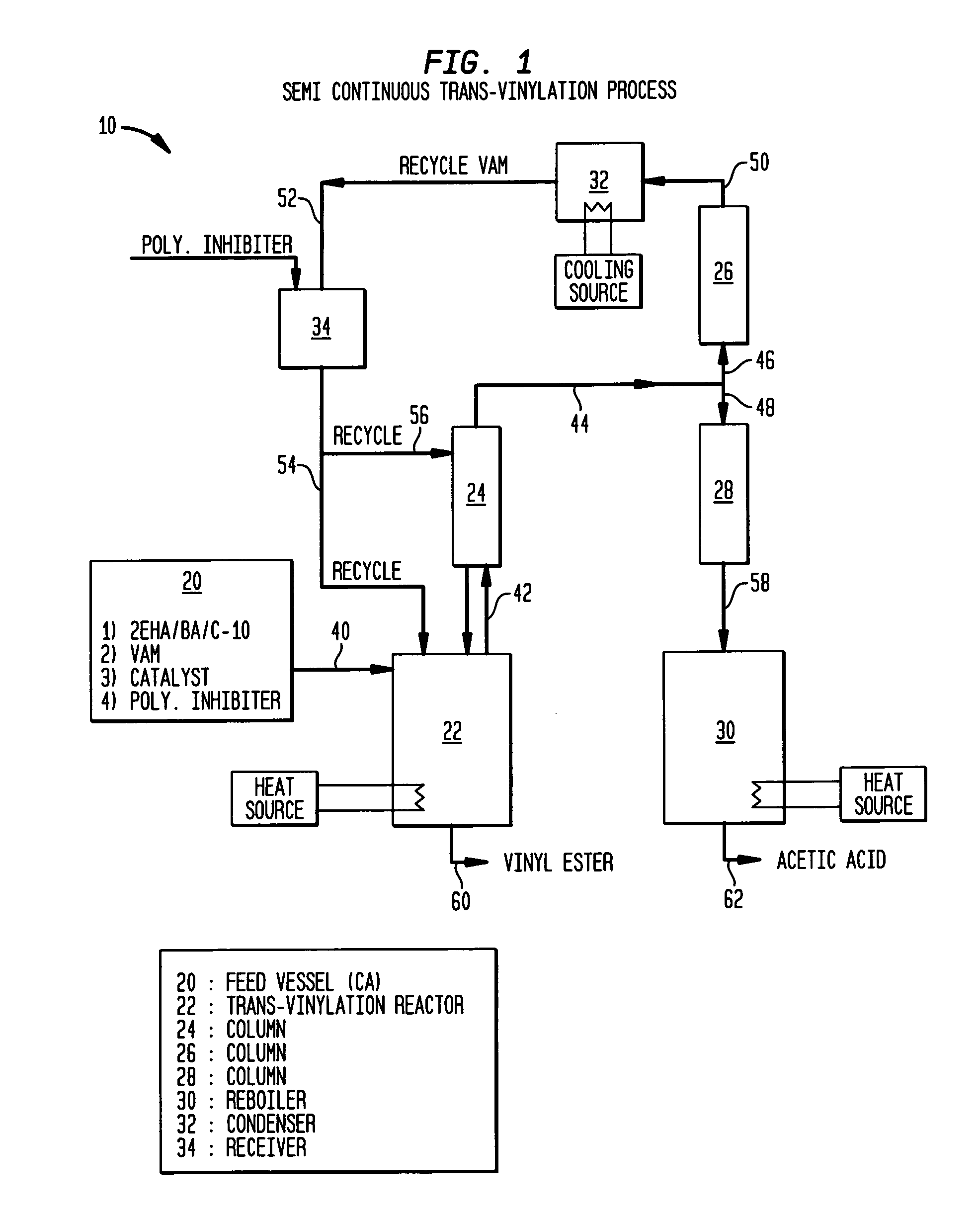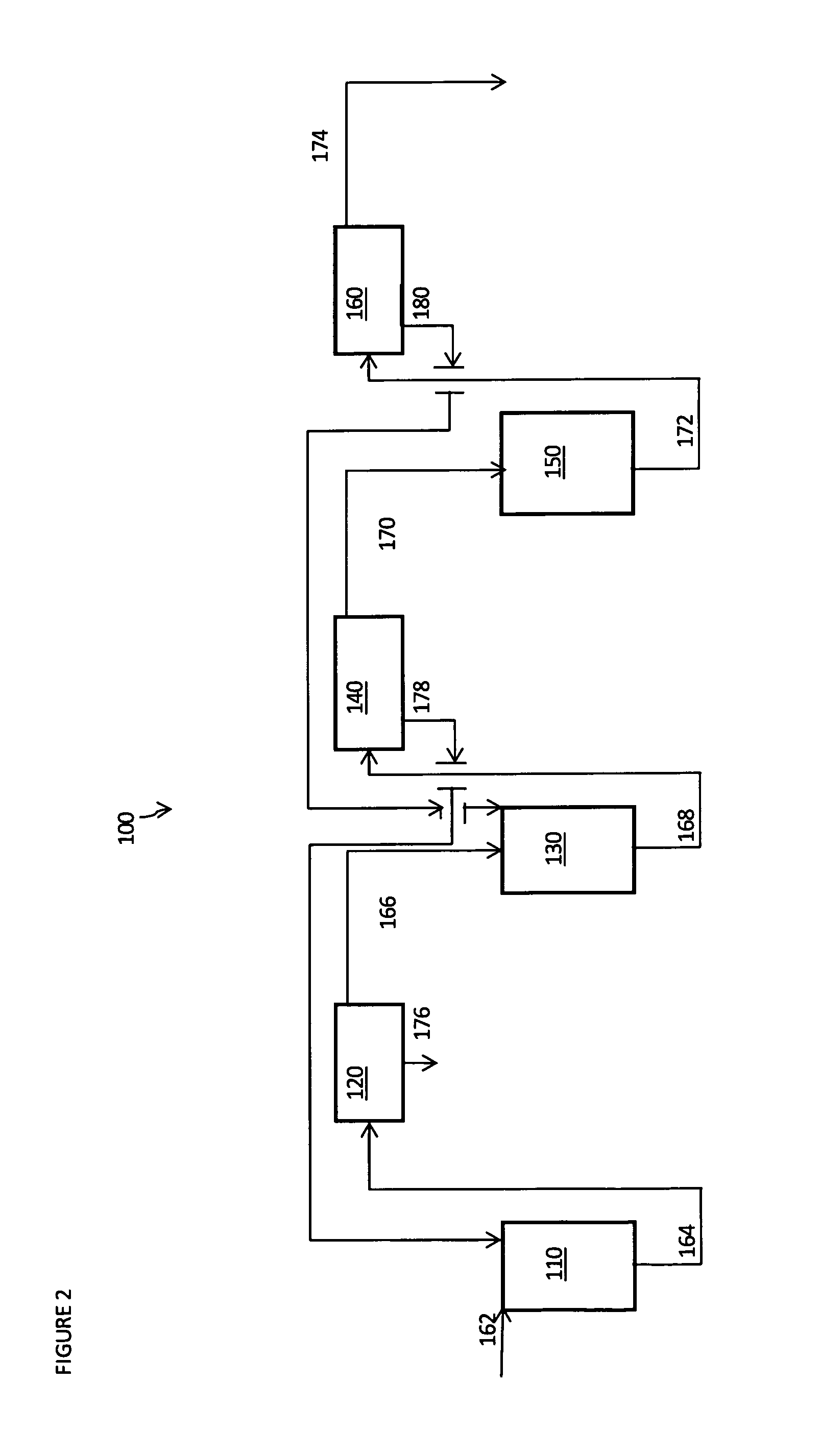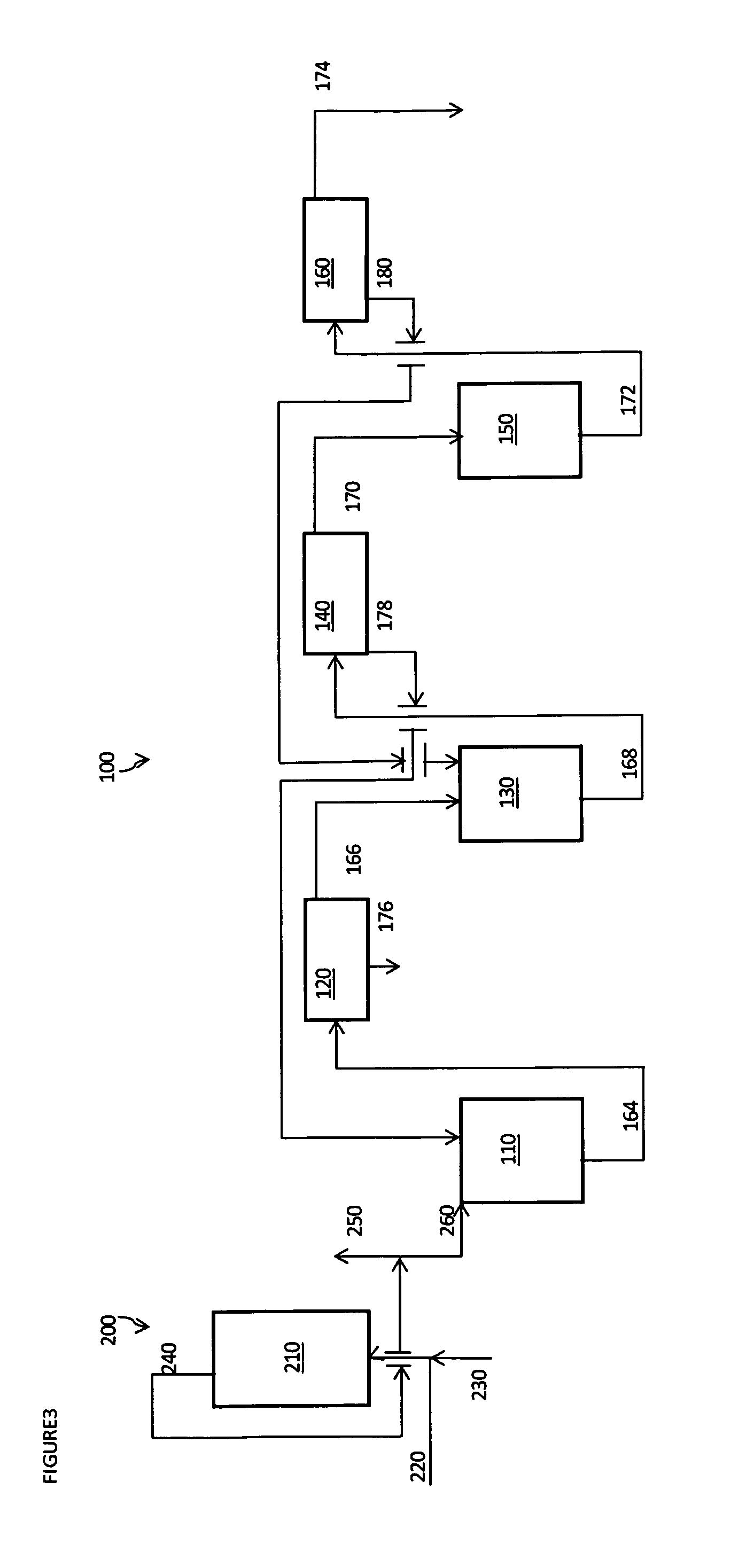Process for the semi-continuous transvinylation of carboxylic acids with vinyl acetate
a technology of vinyl acetate and carboxylic acids, which is applied in the direction of climate sustainability, chemistry apparatus and processes, organic chemistry, etc., can solve the problems of ineffective catalyst, no longer used mercury salts, carbon monoxide atmosphere, etc., and achieve the effect of more economical route to vinyl ester monomers
- Summary
- Abstract
- Description
- Claims
- Application Information
AI Technical Summary
Benefits of technology
Problems solved by technology
Method used
Image
Examples
examples 1 & 2
Scale-Up Study & Pilot Runs for V-2-EH & VB
[0063]The catalyst life and recycle number information generated in lab scale experiments, discussed in further detail below, was used to design an experiment to test catalyst life, to identify a highest achievable turn over number (TON), and to study product purification and isolation. The scale-up was carried out using a semi-continuous reaction approach.
Description of Apparatus
[0064]Transvinylation was performed using a semi-continuous apparatus of the class shown in FIG. 1. The reaction system 10 mainly comprised a feed vessel 20; a stirred reactor 22 provided with a small packed column 24; a second packed column, comprising an upper rectification section 26 and a lower stripping section 28, configured to receive vaporized components from the reactor 22; a stirred reboiler 30; a condenser 32; and a distillate receiver 34. The temperatures of the reactor 22, distillation column 26, 28, reboiler 30 and condenser 32 were controlled by conv...
example 3
Catalyst Preparation
[0091]Catalyst was prepared using palladium acetate and a bidentate ligand such as 2,2′-bipyridyl. This catalyst was prepared generally using toluene as the solvent. Palladium (II) acetate was heated in toluene to 80° C. A solution of 2,2′-bipyridyl in toluene was added over a one hour period. The reaction was continued for two to four hours and then the catalyst reaction mixture was cooled. A catalyst complex, having a mole ratio of palladium (II) acetate to 2,2′-bipyridyl of from about 1:1.1 to 1:1.4, precipitated as a solid. The precipitate was filtered, washed with toluene, and dried under reduced pressure prior to use.
[0092]Another catalyst was prepared using a different bidentate ligand such as 1,10-Phenanthroline. The solubility of 1,10-Phenanthroline is negligible in toluene even at high temperature. Hence instead of toluene, acetonitrile, a very polar solvent, was used for preparation of the catalyst complex. Alternative solvents that may be used for pre...
examples 4-7
Effect on Transvinylation Reaction Using Catalyst Prepared with Bi-Dentate Ligand
[0096]A catalyst was prepared by using 1,10-phenanthroline as bi-dentate ligand. The catalyst prepared was a diacetato-palladium (II)-1,10-phenanthroline complex. The catalyst was isolated in solid form, dried and used in the reaction.
[0097]A V-2-EH run was performed with a palladium concentration of 626 ppm based on the mass of 2-EHA in a batch system. After six hours running at 100° C., the conversion achieved was 84.26%. A VB run was also performed with a palladium concentration of 626 ppm based on the mass of BA in a batch system. After six hours running at 100° C., the conversion achieved was 75.56 wt %. In both runs, vinyl acetate was provided in a molar vinyl acetate:carboxylic acid ratio of 4:1. The catalyst performance for each run was at par with the catalyst prepared by using a bi-dentate bipyridyl ligand.
[0098]
TABLE 3Ligand effect on transvinylation.Example No.4567LigandBis-Bis-1,10-1,10-pyr...
PUM
| Property | Measurement | Unit |
|---|---|---|
| reaction time | aaaaa | aaaaa |
| temperature | aaaaa | aaaaa |
| temperature | aaaaa | aaaaa |
Abstract
Description
Claims
Application Information
 Login to View More
Login to View More - R&D
- Intellectual Property
- Life Sciences
- Materials
- Tech Scout
- Unparalleled Data Quality
- Higher Quality Content
- 60% Fewer Hallucinations
Browse by: Latest US Patents, China's latest patents, Technical Efficacy Thesaurus, Application Domain, Technology Topic, Popular Technical Reports.
© 2025 PatSnap. All rights reserved.Legal|Privacy policy|Modern Slavery Act Transparency Statement|Sitemap|About US| Contact US: help@patsnap.com



